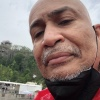Home » Jazz Articles » Interview » Scott Tinkler: Trumpet Down Under
Scott Tinkler: Trumpet Down Under
 Bassist/composer Lindsey Horner recently said, "I think one thing that has really changed in the past quarter century is that the music has become so broad, so truly international and genre-encompassing that the days when jazz was one very definable, finite thing are well and truly gone." These remarks also serve to introduce this interview with the Australian trumpeter Scott Tinkler. The recent emergence of a small cadre of Australian jazz artists has yet to gather the notice of, say, Indian pianist Vijay Iyer or alto saxophonist Rudresh Mahanthappa.
Bassist/composer Lindsey Horner recently said, "I think one thing that has really changed in the past quarter century is that the music has become so broad, so truly international and genre-encompassing that the days when jazz was one very definable, finite thing are well and truly gone." These remarks also serve to introduce this interview with the Australian trumpeter Scott Tinkler. The recent emergence of a small cadre of Australian jazz artists has yet to gather the notice of, say, Indian pianist Vijay Iyer or alto saxophonist Rudresh Mahanthappa. Nevertheless, it's likely that a lot more will be heard from Scott Tinkler, alongside multi-instrumentalist/composer Jacam Manricks, vocalist Chris McNulty and pianist/composer/bandleader Barney McAll. Tinkler brings, perhaps, the broadest outré sensibility of them all. His solo trumpet recording, Backwards (Extreme, 2007), poses some of the most extreme sonic sounds this side of the post-John Coltrane continuum (to borrow from Anthony Braxton-speak). Yet Tinkler certainly has all the talent to convey the standard jazz curriculum, as can be heard in his quartet with pianist Paul Grabowski.
Tales of Time and Space (Sanctuary, 2009), featuring Branford Marsalis and Joe Lovano, is an essential barn-burner with the joint quintet led by Grabowski and Tinkler. This is a compelling artist from down under, with a sound and conception all his own.
This interview took place prior to Tinkler's traveling to the United States for the 2008 edition of the Festival of New Trumpet Music (FONT), in New York City.
All About Jazz: You mentioned that you will be coming to the United States for the [2008] annual FONT festival, curated by Dave Douglas. What do you see as your contribution to the ongoing language of improvisation on the trumpet?
Scott Tinkler: Yes, I'll be coming out to New York for FONT in September, and that is one hell of a question. Whether any of the things I employ as a musician can be seen as contributions to the ongoing language of improvisation is not something that I have thought about or are really of concern to me; they are simply ideas or devices that I'm drawn to use and explore as an improvising artist. I've found that some concepts assimilate their way into my playing quite naturally whereas others take quite some practice to find effective ways that they can work in a musical setting. In my answer to your question I will cover four main areas of my artistic practice.
First, my main area of focus over many years has been rhythmic development and exploration. I'm very much into the idea that rhythmic options should be explored as much as harmonic ones have been. In that same sense I am into rhythmic substitutions or superimpositions as well as rhythm cycles or magic squares, as used in Indian Carnatic music. I find the trumpet can be a very effective instrument in this area, as the articulation on the trumpet can be very forceful and dynamic. My aim has been for better control over all rhythmic variations in the pulse so that I can get away from lines that are solely built on the eighth-note. It is also important to me that I gain flexibility with these rhythms so that I can move between them freely. I approach the study of these rhythmic options systematically so that all bases are covered. I then work on each one until it becomes as comfortable and as natural as playing eighth-notes.
My approach in the use of these ideas in performance is leaning much more toward a totally improvised setting rather than a structured compositional situation, where there is a form with several odd length bars or meters. In cases when I do use a particularly complex form, the improvisation will take us away from the structure and into an interpretation of the form, in much the same way that has been done by many for some time. I'm really into learning this stuff carefully but then not trying to perform it or get it right on the bandstand, but rather just let it be part of my playing in a natural and interactive kind of way. In a similar way to Ornette Coleman playing Harmolodic music, I could say I like to play "Rhythmolodic" music.
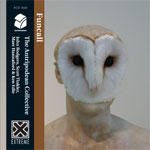 Secondly, for some time now I've been looking at the harmonic ideas introduced by Elliot Carter as well. Although twelve-note-all-interval chords tend to be very difficult on the trumpet (each chord covers five and a half octaves), I've been learning some of his chords in abbreviated ways to introduce a very different harmonic spectrum which I'm starting to get a hold on slowly. Just as the rhythmic variations get away from the eighth-note, this approach moves away from the dominant-tonic sound. The combination of these allows me to play very long phrases that have a very different sense of tension and release.
Secondly, for some time now I've been looking at the harmonic ideas introduced by Elliot Carter as well. Although twelve-note-all-interval chords tend to be very difficult on the trumpet (each chord covers five and a half octaves), I've been learning some of his chords in abbreviated ways to introduce a very different harmonic spectrum which I'm starting to get a hold on slowly. Just as the rhythmic variations get away from the eighth-note, this approach moves away from the dominant-tonic sound. The combination of these allows me to play very long phrases that have a very different sense of tension and release.
A third area of practice that I have been exploring is prepared and extended techniques on the trumpet. I like to use water, drums, cymbals, or any reverberant object that is sympathetic to the air movement or vibrations of the trumpet as well as techniques including circular breathing, multi-phonics, split-tones, and stop-tonguing. I also like to party disassemble the instrument too. I find that I still explore pretty much the same ideas rhythmically and harmonically when involved in these moments. None of these ideas are new or particular to me, many players are exploring these ideas very successfully, and I guess it's just how each individual puts it all together that makes them sound different.
Last, but by no means least, a further important area for me is the focus on group improvisation as opposed to the separate soloist's idea. This too is by no means a fresh idea but an aesthetic I do like to follow. It is important that the people I play with have an equal footing in the music at all times and not be filling a role. For me, this means more responsibility for each member too, because we are not relying on any one person to keep the time or the momentum of a piece.
Hopefully, this allows for lots of space in the music too. I like to avoid the feeling that everyone plays because they can. Frantic, free playing is not the aim at all, but rather a compositional attitude towards the creative process of improvisation. This, of course, is an ideal—the fact remains that I might play for a while and then not. This may sound like I've taken a solo as such, but I prefer to see my involvement as part of the whole piece rather than a solo. I really aim to play inside the band and not over it. Each time I'm involved needs to be part of the piece rather than an entity until itself, "the trumpet solo." In that sense, anyone who is not playing is still involved in the music because they affect it by the act of choosing not to play.
AAJ: Even for someone familiar with the avant-garde, your solo trumpet CD Backwards presents some challenging material. Please comment on this particular session and how this ties into the aesthetics which you briefly spoke about.
ST: Roger Richards from Extreme Records asked me to do a solo album and I was very much up for the challenge. I knew the studio was well-equipped with various instruments at my disposal and I had a few ideas in mind that I wished to employ but time was limited. I had just five hours to set up and record. I enjoy interaction in music, so the approach I took up was to set up each possibility and mic it up so that I could then interact with the space and the instrument in it.
In relation to the aesthetics I mentioned, this might be a time for the music to speak for itself, though I will add that on this recording I employ rhythmic explorations, moments of intervallic playing stemming from the all-interval chords, as well as the use of extended and prepared trumpet techniques. Playing my instrument into/onto/at the various sound sources, such as drums, cymbals, a bucket of water, and a piano, requires me to respond in much the same way as playing in a group. Unexpected ideas and sounds present themselves. I then take a compositional attitude towards each of these musical events, working on the development of ideas to give a structure to the pieces.
 AAJ: Let's delve into your musical and non-musical roots. Please talk about the early years.
AAJ: Let's delve into your musical and non-musical roots. Please talk about the early years.
ST: Well, I'm from a big family. I have four sisters and a brother. I am the youngest and my brother is the eldest. My father is a retired minister from the United Church of Christ and my mother was a secretarial studies teacher. My mother always wanted to learn the piano but her father died young and, being the eldest, she had to look after her brothers and sisters while her mom worked, so there was no time or money for piano lessons. Due to this, Mom made sure that all of her children had access to music lessons if they wished. I started on snare drum at age eight for a year, then piano for a year before I had an offer of a trumpet with two lessons for $20, and never looked back.
My early training was very formal, following a string classical syllabus of scales and etudes. The only listening I really had access to between 10 and 13 was an old reel-to-reel tape player that was in the house. The only music on the tapes that I liked was Louis Armstrong and his Hot 5, The The Beatles, and Deep Purple (strange mix, I know). There was a stage band that had just started at the school I was at, and when I first heard the band I knew it was a music that interested me. I was much more interested in the band's music than the classical orchestra that I was in. I guess for a smallish country town (80,000 people), I was lucky that the school had a good music program.
At the age of 13, my dad got a new posting to a town in Tasmania, and there was a teacher there who was into jazz. This allowed me to continue to learn my classical trumpet studies and chord changes and how to play them. This teacher, Gordon Scott, introduced me to lots of new music and the nuts and bolts of how it was put together. I also got the chance to play with him, as he played vibes and trombone. At this age, around 14 or 15, I was really into Clifford Brown, Fats Navarro, Dizzy Gillespie, and still Louis Armstrong; I would listen to them for hours. It was around then that I first heard the late Freddie Hubbard. He was visiting Australia in 1980 and I saw him on a TV show. I just didn't get it at all. I thought it was just all flashy technique and I couldn't hear what he was doing. But within a year he was my favorite player and I couldn't get enough of his playing.
From there, I got into heaps of Lee Morgan and Woody Shaw and some early Miles Davis. It wasn't really until my late teens that I could handle the depth of Miles' work in the late 1960s and early '70s. I also started listening to Wynton Marsalis around the mid-'80s and was blown away by his ability on the horn. I kept buying his albums up to about 1992. From high school I went on to do a jazz course at a university in Melbourne. I didn't last long, as I'd just had enough of institutions, so I joined a touring band, Blues Brothers Revival Band, and hit the road for a couple of years. I ended up back in Melbourne in a cabaret band, and was doing a few jazz gigs around the place. I sort of woke up from this period of my life at around 25 years of age and realized I needed a serious refocus back into the direction of, dare I say it, a more serious musical exploration and development.
I really hit the shed at this time. I always did practice, but I really focused my efforts at this time on not only the horn but writing as well. I had a most fortunate meeting at this time, too, of a man who became quite a musical mentor for me. Mark Simmonds is a fiery Australian tenor player with the virtuosity of John Coltrane but the sound of Coleman Hawkins. He is truly a monster player and I served my apprenticeship with him, I would say. He trained me rhythmically and harmonically as well as challenged me conceptually to think about the effect I was having on the music whilst improvising. This was the heaviest schooling I have had.
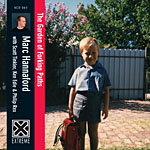 I was also fortunate to start working with Paul Grabowsky, the Australian pianist, in the early 1990s. We were in each other's band, and working with Paul was another huge growing experience. We put out two quartet albums, in 1993 and 1995. In mid-1995, I moved to Sydney and formed a trio with drummer Simon Barker, with the bassist Adam Armstrong. I had played with Simon in Mark Simmond's band. We really worked hard on the music in this group and did three albums and several international tours.
I was also fortunate to start working with Paul Grabowsky, the Australian pianist, in the early 1990s. We were in each other's band, and working with Paul was another huge growing experience. We put out two quartet albums, in 1993 and 1995. In mid-1995, I moved to Sydney and formed a trio with drummer Simon Barker, with the bassist Adam Armstrong. I had played with Simon in Mark Simmond's band. We really worked hard on the music in this group and did three albums and several international tours.
I also lived in Holland for a year (1997 to 1998) then moved back to Byron Bay in Australia, which is a surfing village on the East Coast. I lived there for five years. Despite much surfing and fishing, I often went two hours north to Brisbane, where two guys, Ken Edie and John Rodgers, live. They are really heavy players and thinkers. John Rodgers is a virtuoso violinist and an extraordinary composer and Ken Edie is an amazing drummer. Both have a love for very out music in the classical vein and for improvised music. The bulk of stuff I do now still involves these guys and we have been doing quite a bit of recording for the Extreme label over the past 18 months. I've been back in Melbourne now for almost five years and have a great family life with my partner of 18 years and our two girls, Mia (13) and Sunny (8).
AAJ: One of interesting things about you, and other white Australian artists who I've spoken with, is that you don't overtly mention the unique geo-political landscape that is your motherland, particularly the Aborigine people and their place in Australia's history.
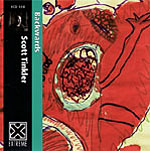 ST: Well, actually, I believe that the "geo-political landscape" as you put it, has been a very influential element in my playing. For me, the tyranny of distance has been much more a positive than a negative. I have found that living in Australia and not having the history and expectation of jazz hanging over my head is somewhat liberating. I've always loved jazz but do not by any means profess that I am a jazz musician. Jazz is a style that I've studied and played but I consider myself an Improvising musician. In fact, I was never any good at imitation and as such never tried to sound like any of the players I was into. What I did aim for was to get the same feeling of intensity and expression in my music that I heard in theirs.
ST: Well, actually, I believe that the "geo-political landscape" as you put it, has been a very influential element in my playing. For me, the tyranny of distance has been much more a positive than a negative. I have found that living in Australia and not having the history and expectation of jazz hanging over my head is somewhat liberating. I've always loved jazz but do not by any means profess that I am a jazz musician. Jazz is a style that I've studied and played but I consider myself an Improvising musician. In fact, I was never any good at imitation and as such never tried to sound like any of the players I was into. What I did aim for was to get the same feeling of intensity and expression in my music that I heard in theirs.
When I first visited New York in 1993, I saw so much music. Some was mindblowing and some was mind-numbing. I think the best things I heard were Doc Cheatham at Sweet Basil and then Slide Hampton with Jimmy Heath. Both of these events were full of history but also passion and expression. They weren't pretending to know the history; they were the history. This was a reminder for me that I had to continue to work on creating my own style through playing music with my peers and develop a language that was relevant to us here in our "motherland." I have spent quite a bit of time working with indigenous artists here, both in the city and the more traditional setting of the outback. I have workshopped musical collaborations with them. I can't say that their music has had a direct influence, though it has been inspirational. It is more that the remoteness of the environment here in Australia has influenced us all, and as such we do have a connection.
AAJ: With the current worldwide economic crisis, are you able to sustain a career, both at home and touring-wise? Have you noticed a change in the number of people coming out to see you?
ST: First off, I haven't supported myself solely by performing for many years, if ever. Teaching has been a main source of income as well as the odd cleaning/painting/removal/plumbing job or whatever other work I've had to do. The last time there was an economic crash here in Australia, during the late 1980s, was the time I had the most live work. It seems that during a financial depression people actually seek more entertainment, or maybe they just go to pubs to drown their sorrows. Certainly, for me it is much more expensive to travel at the moment, as the Aussie dollar is not strong. So that may change some plans for overseas travel in 2009, though this can also work the other way if you're being paid in the stronger currency. As far as the immediate audience for live performances, I have noticed no change.
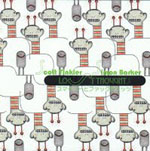 AAJ: Let's get back to your trip to the United StatesA for the 2008 FONT Festival. Give us some general impressions?
AAJ: Let's get back to your trip to the United StatesA for the 2008 FONT Festival. Give us some general impressions?
ST: New York City certainly is a great place to hang out and see jazz—there are many gigs every night. It's a pretty safe place to be now and feels very conservative to me. I don't think it's the creative hub of improvised music that it once was; this is not to say there isn't some fantastic music coming from there, just that in today's world it's not the be all and end all of music. Personally, I found there to be huge amounts of what I might call cheesy jazz, more for the entertainment of punters than for art. I don't think this is particular to New York, more an indication of the world scene. The exciting music I hear in New York is coming from guys like Peter Evans, Jim Black, Tim Berne, Ellery Eskelin, and that whole crew, but unfortunately they weren't playing much in New York at the time of my visit. It seems that even these guys tend to do more and make more outside of New York and indeed the United States. I enjoyed the chance to play some of my music there: Carl Dewhurst and Ken Edie joined me from Australia for the trip and we performed at Cornelia Street for FONT. I also did a duet gig with Mark Helias, which was great fun. I did have a good time but I wouldn't say anything really blew me away, except for Peter Evans, who is changing the way the trumpet can be played.
AAJ: In what way is Peter Evans changing the way the trumpet can be played?
ST: Well, Peter Evans has a command of extended techniques that to my ears is unprecedented. It's not just the use of these techniques but his ability to move between them with such apparent ease. Peter will use split tones, multi-phonics, embouchure manipulation, large intervallic leaps, pedal register to double high register, all while circular breathing for extended techniques on the instrument. I find his solo trumpet work particularly awe-inspiring.
AAJ: The other aspect to your comments about the New York jazz scene deal with race. It is interesting that you did not name any African-Americans who are doing compelling work amongst the cats you mentioned. Is this also reflective of the general lack of innovation in the music?
 ST: The only race I know of is the human race. There was no agenda in the names I mentioned, they were just guys that I hung with, so they were on my mind. I think the general lack of innovation in music is more to do with a consumer society where people are interested in music as a form of entertainment and many musicians are content to involve themselves in an established genre with no interest in development past just being "better" at their craft and being professional. An example might be the lineage of Dizzy Gillespie, who was a great artist, but the clones that followed who could play "Dizzy" faster and higher were not artist or innovators, but rather great craftsmen who entertain.
ST: The only race I know of is the human race. There was no agenda in the names I mentioned, they were just guys that I hung with, so they were on my mind. I think the general lack of innovation in music is more to do with a consumer society where people are interested in music as a form of entertainment and many musicians are content to involve themselves in an established genre with no interest in development past just being "better" at their craft and being professional. An example might be the lineage of Dizzy Gillespie, who was a great artist, but the clones that followed who could play "Dizzy" faster and higher were not artist or innovators, but rather great craftsmen who entertain.
I see this happening a lot in jazz today around the world. There are lots of players well educated in the language of jazz and its history, playing the music extremely well, and I think this is far more common than people producing interesting art. Jazz has been established as a great art form, but playing it does not necessarily make you an artist.
AAJ: In regards to the staid status of jazz or improvised music in America, you have worked with some of the marquee names in America, for instance on Paul Grabowsky's Tales of Time and Space, which features both Branford Marsalis and Joe Lovano. So what is your opinion on these cats?
ST: I actually just played with Joe Lovano at the Wangaratta Jazz Festival here in Australia. It was with Grabowsky and an Australian rhythm section. His playing is very distinctive and extremely strong. I really love playing with him. I think Joe is pretty open to ideas and he certainly was up for playing in an open format with us. Joe, like Branford, has a deep understanding and knowledge of the jazz tradition, but has his own spin on it. Lovano has become a very influential player to the point where you can hear his influence on younger players.
At the time of the sessions for Tales, I did chat with Branford quite a bit about the state of jazz. He is a very intelligent and well-spoken man, so it was a fun discussion. The bottom line for me, I guess, is that being from Australia and not really feeling a direct connection to jazz, I don't feel the need to be, or at least to call myself, a jazz musician. Branford grew up in the birth place of jazz, and as such it's more culturally relevant for him to consider himself part of that music and its lineage, and I gotta say he really is an amazing musician. How this related to the state of music in America, I'm not sure. Both of these guys have established themselves as high profile artists whose playing is instantly recognizable and indeed influential. It is more in the younger generation and the direction they are taking.
AAJ: Comparing some of your earlier recordings, like Sofa King (Buzz Records, 1988), to your more recent work, there is such a dramatic use of space in your more recent recordings.
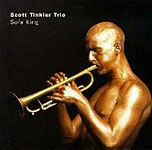 ST: I have always spent a lot of time listening back to stuff which I have recorded, and one of the main things that struck me was the potential for more space in my playing. I have worked on trying not just to leave gaps, but also to create tension and momentum by the use of space. I find that two main things tend to happen: first off, you listen more to what's going on around you.; secondly, it allows others in the music the chance to have more input, much like a conversation. This can help avoid role-playing in the music too as there can be more adventurous playing by all. As you can tell, by the time it takes me to answer these questions, sometimes I need time to think about stuff before I rant about it. I try to do that when I play. I have heard people say, "Just play what you hear" or, "You got to listen to the band." Both of these statements don't make much sense to me.
ST: I have always spent a lot of time listening back to stuff which I have recorded, and one of the main things that struck me was the potential for more space in my playing. I have worked on trying not just to leave gaps, but also to create tension and momentum by the use of space. I find that two main things tend to happen: first off, you listen more to what's going on around you.; secondly, it allows others in the music the chance to have more input, much like a conversation. This can help avoid role-playing in the music too as there can be more adventurous playing by all. As you can tell, by the time it takes me to answer these questions, sometimes I need time to think about stuff before I rant about it. I try to do that when I play. I have heard people say, "Just play what you hear" or, "You got to listen to the band." Both of these statements don't make much sense to me.
I can hear all sorts of shit to play, but if I played it all I would never stop. There needs to be a thought process that goes along with what you might "hear." Using space allows me to filter some stuff. The one about listening is the opposite. If I just listened, then I'd not play because I would be listening constantly. I tend to make a statement, then listen to the response, then make another in response. It's a big balancing game for me; trying to find the right combination changes too with the different situations you find yourself in as an artist. When playing solo, or even just practicing, I will play an idea then imagine a response, or even listen to what I might play if I were to, if that makes sense to you. I love the idea of hearing something and not playing it—there is no need to say everything we think.
AAJ: Is there an inherent problem with this kind of improvisation in that it runs the risk of being self-indulgent?
ST: By no means at all is that a problem; it is a strength. To indulge in one's self will surely create a more individual outcome. The idea of indulging in someone else is simply to recreate an idea that already exists. Should I play like the late Freddie Hubbard? Should I play like Miles? No, I should play like Scott. How do I do that? Well, self-exploration. I need to indulge in myself to find the way I want to sound. Was Monk self-indulgent? Trane? Only in the best way; they played the way they wanted to, not how anyone else wanted them to. I look for and expect the individual in all art. Art is about creating something, not recreating it.

AAJ: What are your feelings regarding your fans, which enjoy hearing you in a more traditional free-bop compositional vein?
ST: Well, I'm happy if they enjoy listening to any of my music. There will be listeners who view things the other way around from the situation you mentioned. It doesn't bother or influence me either way in the slightest. If you like it, enjoy it; if you don't, turn it off and move on. If you are willing to be adventurous, then keep giving it a go. You never know, one day your views/tastes may change. Mine certainly have over the years.
AAJ: In terms of the future plans for your music: do you plan on continuing to work in the small instrumental context that you have thus far? Or might you work with a larger ensemble, or say, strings?
ST: Mostly small ensemble for sure. This is by far my preference. There are some plans to play a concerto with the London Sinfonietta to be written by violinist John Rodgers. My part would be fully improvised with the written score of John Rodgers. This project is pretty exciting for me and I hope it comes off. Apart from that I do play with Indian classical musicians to Australian pop singers. I doubt there will ever be a Scott Tinkler with strings. The closest is the quartet I play in with John Rodgers, who is an incredible improviser on the violin. This is one of my favorite projects.
Selected Discography
Antripodean Collective, Shank (Extreme, 2009)
Antripodean Collective, Funcall (Extreme, 2008)
Scott Tinkler, Simon Barker, Lost Thoughts (Kimnara, 2008)
Antripodean Collective, Massacre of the Egos (Extreme, 2008)
Marc Hannaford, Garden of Forking Paths (Extreme, 2007)
Scott Tinkler, Backwards (Extreme, 2007)
Scott Tinkler, Philip Rex, Paul Grabowsky, Ken Edie, Live (Origin, 2006)
James Sherlock Quartet, Watermark (Jazzhead, 2006)
Paul Grabowsky, Before Time Could Change Us (Warner Brothers, 2005)
Paul Grabowsky, Tales Of Time And Space (Sanctuary Records, 2005)
F.A.T.S, Juicy Shoots (Independent, 2002)
F.A.T.S, FATS (Independent, 2000)
Scott Tinkler Trio, Sofa King (Origin, 1997)
Scott Tinkler Trio, Dance of Delulian (Origin, 1996)
Scott Tinkler Quartet, Hop to the Cow (Origin, 1995)
Mark Simmonds Freeboppers, Fire (Birdland, 1994)
Scott Tinkler Quartet, Back of my Head (Origin, 1993)
Photo Credits
Black and White Photos: Andrew Cowan
Bottom Photo: Laki Sideris
< Previous
Swing
Next >
Sunnyside Cafe Series
Comments
Tags
For the Love of Jazz
 All About Jazz has been a pillar of jazz since 1995, championing it as an art form and, more importantly, supporting the musicians who create it. Our enduring commitment has made "AAJ" one of the most culturally important websites of its kind, read by hundreds of thousands of fans, musicians and industry figures every month.
All About Jazz has been a pillar of jazz since 1995, championing it as an art form and, more importantly, supporting the musicians who create it. Our enduring commitment has made "AAJ" one of the most culturally important websites of its kind, read by hundreds of thousands of fans, musicians and industry figures every month.
